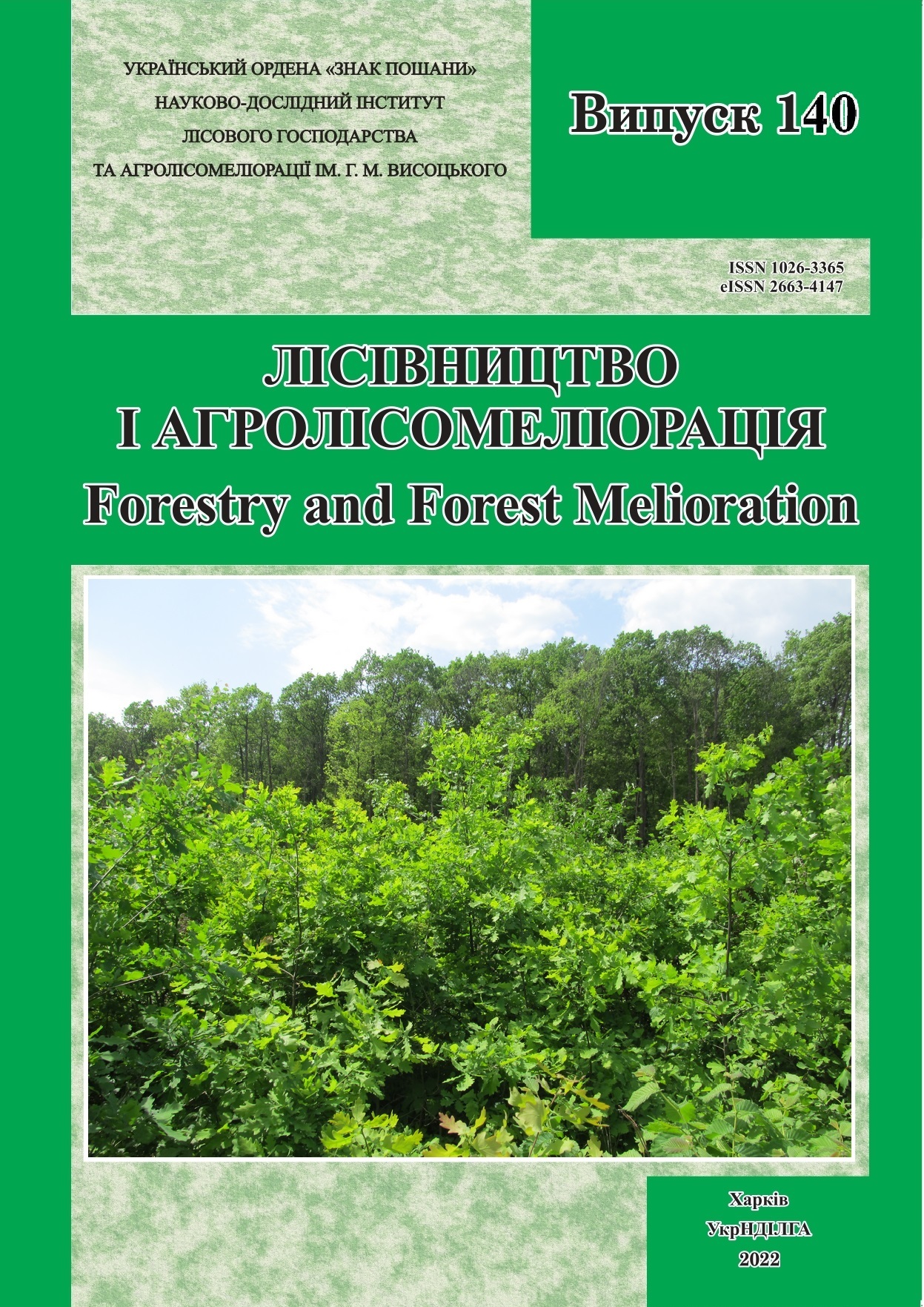Abstract
Introduction
Since the classification proposed by Gustav Kraft in 1884 to reflect the trees differentiation in a forest stand by size, numerous studies have been conducted on this issue for stands of many types of forests ranging from young to overmature stands of various species. The application of Kraft's classification in practical forestry activities (forestry production) was not analysed.
The purpose of the study was, using the regularities of the mensurational structure, to establish the characteristics of the trees distribution by Kraft classes in fir stands in the Carpathians, which were formed without the tending felling or with low or moderate intensity felling, to compare the results and use them to control the effectiveness of the tending felling.
Materials and Methods
The peculiarities of the trees distribution by Kraft classes in fir stands were established with the comprehensive use of experimental data on their mensurational structure. The data from 72 sample plots were directly used and processed, of which 23 were established in fully stocked fir stands, 32 in fir stands in which tending felling of low intensity (10–15 %) was carried out, and 17 sample plots were laid out in fir stands with moderate intensity of tending felling (16–25 %).In order to establish regular correlations between the population of trees according to Kraft classes and thickness degrees in the stands of each sample plot, complete and numerical registration was carried out. During the latter, each tree with a serial number assigned according to the identified features, was attributed to a certain Kraft class.In general, during the study, the forestry method was applied when providing general characteristics of the stands; the forestry mensuration method was used to determine the mensuration characteristics of both stands and individual trees on sample plots as well as to establish the distribution of these trees by Kraft classes and thickness degrees; the method of comparison was used to establish the characteristics of the trees’ distribution by thickness and Kraft classes in fully stocked and modal fir stands with different intensities of tending felling.
Results and Conclusions
The study showed that in fully stocked and modal stands, regardless of the average stand diameter, trees of V and IV Kraft classes are represented in natural thickness degrees of 0.7 and below. Thickness degrees from 0.8 to 1.3 are occupied with trees of III and II Kraft classes. In the stands with the thickness degrees of 1.4 and above, the trees of I Kraft class prevail. It has been found that weak- and moderate-intensity tending felling contributes to a relative increase in the number of dominant trees in the stands and, accordingly, to a decrease in depressed trees. The formation of stands at such intensity is close to the natural process of growing forests, when no tending felling is carried. In the case of more than moderate felling intensity, which is possible only if not only depressed trees of V and IV Kraft classes but also dominant trees of III, II and even I Kraft classes are selected for cutting, it is recommended to follow the indicators of the given series of trees distribution by Kraft classes in stands during their cultivation. We propose to use the indicator of the relative population of trees of the III+II+I Kraft classes in the fir stands of the Carpathians to control the effectiveness of the tending felling. Such control should be based on the given series of trees distribution by natural thickness degrees and Kraft classes (combinations of those classes) in modal fir trees grown under different intensities of felling.
6 Tables, 3 Refs.
References
Hrom, M. M. 2010. Forest mensuration. Lviv, RVV NLTU, 416 p. (in Ukrainian).
Kichura, V. P. 1974. Peculiarities of the structure and current growth of natural fir forests in the Bukovyna Carpathians. Extended abstract of PhD thesis. Bryansk, 26 p. (in Russian).
Pogrebnyak, P. S. 1968. General forestry. Moscow, Kolos, 440 р. (in Russian).

This work is licensed under a Creative Commons Attribution 4.0 International License.
